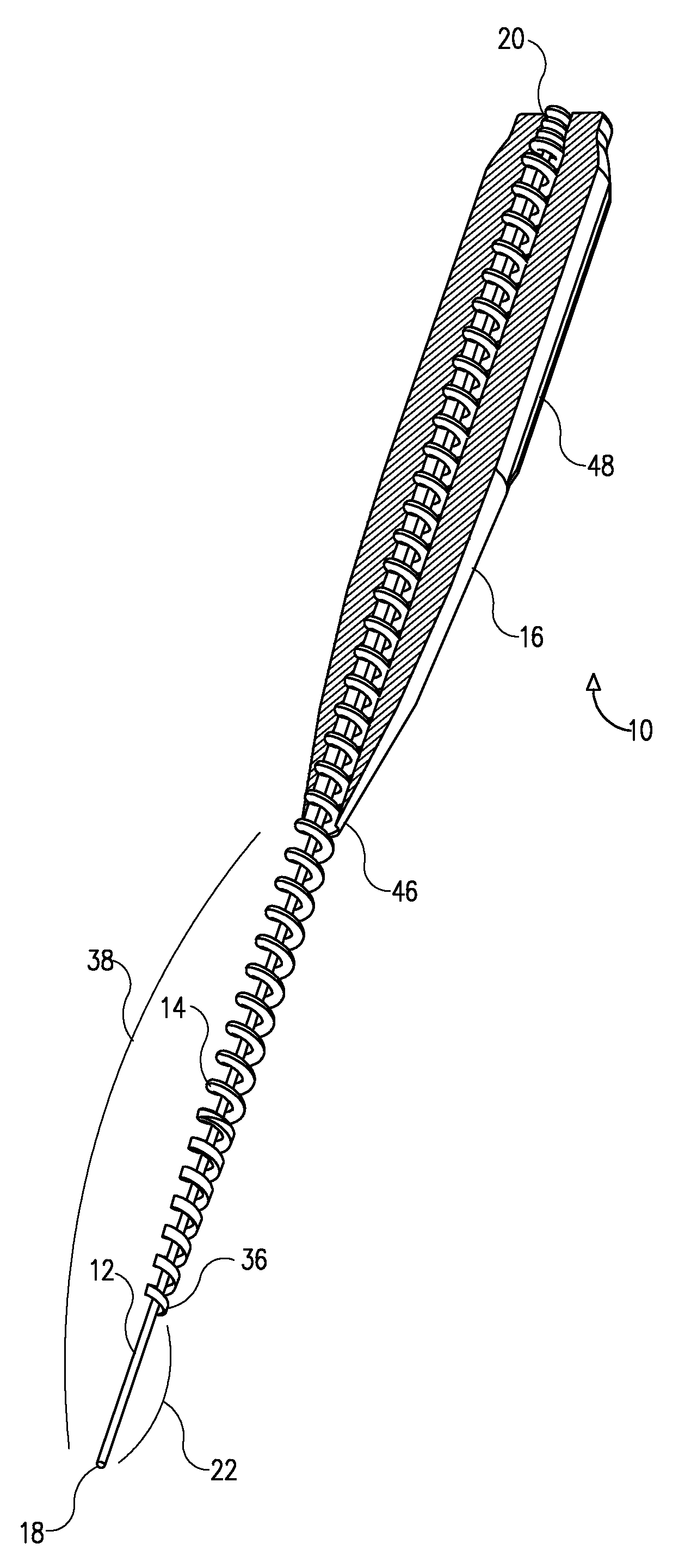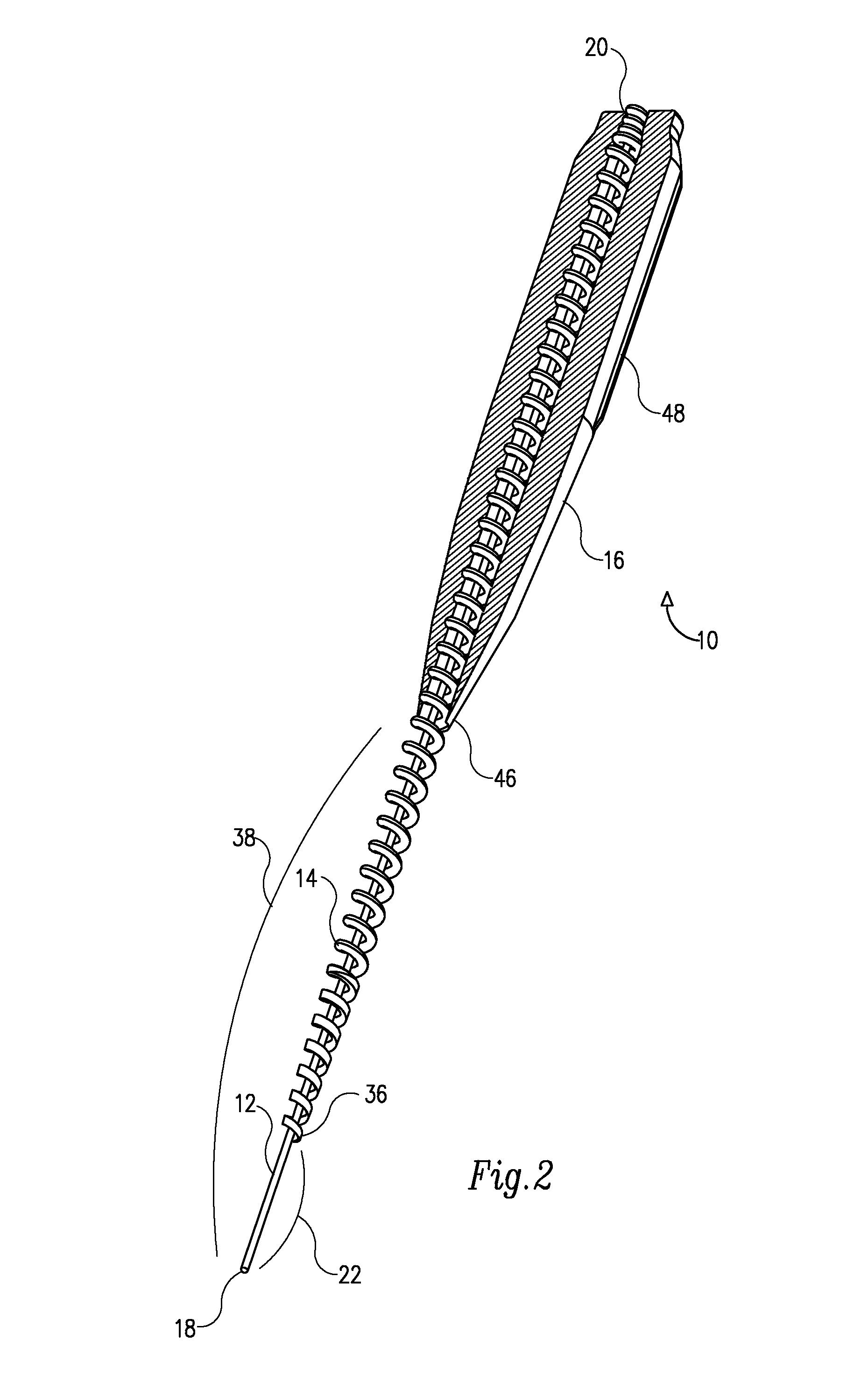Rotary endodontic file with frictional grip
a technology of frictional elastomer and endodontic file, which is applied in the field of endodontic devices, can solve the problems of limited reach to the apical constriction for educate widening and removal of the smear layer, risk of fracture when excessive force is applied, and physical difficulty and time-consuming
- Summary
- Abstract
- Description
- Claims
- Application Information
AI Technical Summary
Benefits of technology
Problems solved by technology
Method used
Image
Examples
Embodiment Construction
[0035]In the following description of some embodiments, identical components that appear in more than one figure or that share similar functionality will be referenced by identical reference symbols.
[0036]FIGS. 1 and 2 show an endodontic file 10 to be utilized with a dental instrument, such as a handpiece 52 (FIG. 8) to which an elastomer grip 16 of the file 10 is attachable and supported only by friction, being slightly wider than the internal diameter of the mounting barrel of the dental instrument. The file 10 permits complete canal preparation in a single, time-saving procedure after the first canal opening is made, typically using the smallest applicable hand-held file thickness which is normally the 0.15 size. The file 10 is composed of at least three basic elements, a central longitudinal cord 12, a helically wound wire 14 at least partially surrounding the cord 12 and an elastomer grip 16 partially covering the helically wound wire 14 near a first end thereof.
[0037]With refe...
PUM
 Login to View More
Login to View More Abstract
Description
Claims
Application Information
 Login to View More
Login to View More - R&D
- Intellectual Property
- Life Sciences
- Materials
- Tech Scout
- Unparalleled Data Quality
- Higher Quality Content
- 60% Fewer Hallucinations
Browse by: Latest US Patents, China's latest patents, Technical Efficacy Thesaurus, Application Domain, Technology Topic, Popular Technical Reports.
© 2025 PatSnap. All rights reserved.Legal|Privacy policy|Modern Slavery Act Transparency Statement|Sitemap|About US| Contact US: help@patsnap.com



